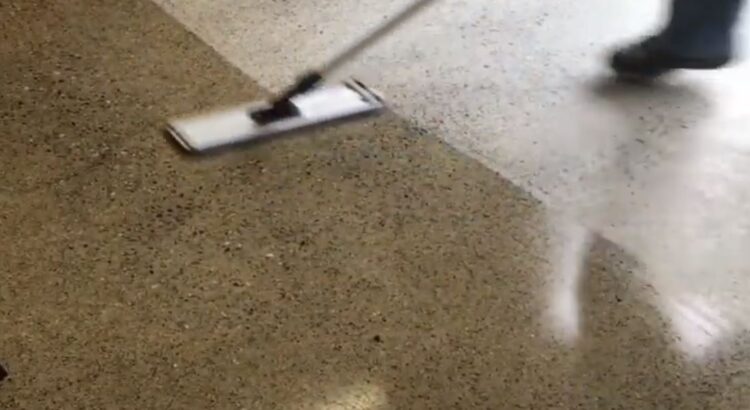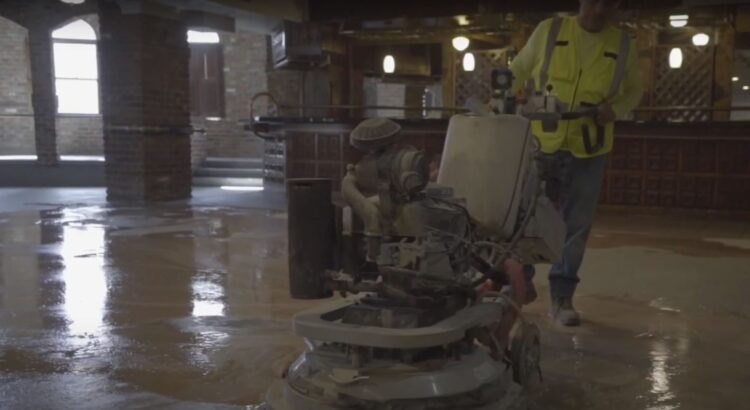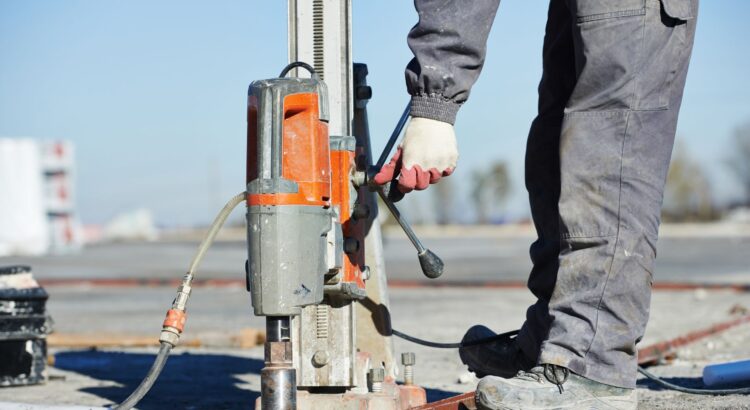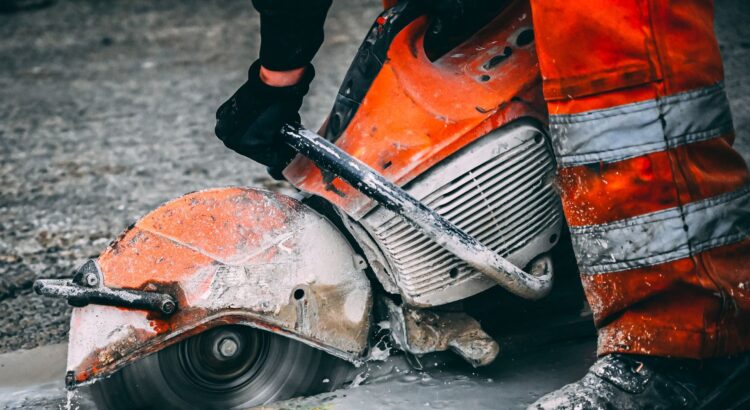Exploring Coloured Concrete Finishing Costs in Auckland
Coloured concrete finishes have grown exponentially in demand across Auckland homes and commercial spaces. Their durability, versatility, and unique aesthetics make them a highly sought-after choice among homeowners, builders, and designers.
Different Types of Polished Concrete Flooring Options
The cost of polished concrete flooring depends on the method, design complexity, and total area size. Here’s a breakdown of these prevalent choices:
- Basic Grind and Seal: This process involves grinding the concrete and sealing it with a protective coat. Typical cost: $77.00 – $116.00 per square metre.
- Full Polished Concrete: Offering a high-gloss finish that doesn’t necessitate waxing, this method requires multiple grinding, densifying, and polishing stages. Expected cost: $155 – $232.00 per square metre.
- Coloured Concrete with Aggregates: In this method, coloured aggregates or stones are added before pouring, which are later showcased through grinding. Cost range: $186 – $310 per square metre.
- Acid-Etched Coloured Concrete: By using a chemical reaction to give colour to the concrete, this method yields distinctive patterns. This choice can range between $232.00 – $387.00 per square metre.
The Council’s Role: Bylaws and Consents
Navigating through Auckland Council regulations and bylaws for construction tasks, including those for concrete works, is essential. Some bylaws might influence the type of sealant or concrete mixture permissible, especially with potential environmental implications. It’s paramount to ascertain whether your suburb, whether it’s Glen Eden or Remuera, holds any specific requirements.
More extensive projects might call for a Resource Consent, especially if potential environmental or historical area impacts are foreseen. Consent fees are typically around $1550.
Safety Considerations: Health and Safety Requirements
In New Zealand, particularly Auckland, health and safety regulations dictate the standards for construction ventures, including concrete projects. Key aspects include:
- Proper Personal Protective Equipment (PPE): Ensuring all involved have the correct gear like safety boots, gloves, and eyewear.
- Dust Management: Concrete grinding releases dust, which can pose respiratory threats. Effective dust control, such as industrial vacuums and proper ventilation, is paramount.
- Chemical Usage Protocols: Sealants, densifiers, and other chemicals need to be utilised in well-ventilated environments and stored securely.
While incorporating these health and safety measures does affect the overall cost, they are critical for compliance and ensuring worker safety.
Regional Specificities
The specific region in Auckland can influence the overall cost. Geological factors in certain suburbs, like New Lynn’s clay soil, may necessitate additional groundwork. On the other hand, regions like Mount Eden, known for basalt-rich grounds, present different challenges.
Summary Table: Cost Breakdowns**
| Concrete Finish Type | Cost per Square Metre |
| Basic Grind and Seal | $77 – $116 |
| Full Polished Concrete | $155 – $232 |
| Coloured Concrete with Aggregates | $186 – $310 |
| Acid-Etched Coloured Concrete | $232 – $387 |
| Resource Consent Fee (if needed) | Starting from $1550 |
These costs are indicative, with the final amount being contingent on specific project details, chosen contractor, and unforeseen complications such as inflation and other macroeconomic variables. Always obtain quotes from established providers to understand the potential expenses for a polished finish tailored to your needs.
Frequently Asked Questions about Coloured Concrete Finishing in Auckland
How much does basic grind and seal cost per square metre in Auckland? It typically ranges between $77 and $116 per square metre.
What is the estimated cost for full polished concrete in Auckland? You can expect to pay between $155 and $232 per square metre.
How is the price determined for coloured concrete with aggregates? The cost varies, but it’s usually within the range of $186 to $310 per square metre.
What’s the cost implication for acid-etched coloured concrete? This method generally costs between $232 and $387 per square metre.
Do I need to get consent from the Auckland Council for my concrete finishing project? For larger projects or those that might impact the environment or historical areas, a Resource Consent may be necessary.
How much does a Resource Consent typically cost? Consent fees start from $1550, though this can vary depending on the project’s nature and scale.
Are there any specific bylaws in Auckland related to concrete works? Yes, there are bylaws that might influence the type of sealant or concrete mixture permissible, especially considering potential environmental implications.
Does the specific suburb in Auckland influence the overall cost? Yes, geological factors in certain suburbs may necessitate additional groundwork or considerations, influencing the cost.
Why are health and safety regulations important for polished concrete flooring? Adhering to health and safety regulations ensures worker safety, compliance, and the overall quality of the project.
What personal protective equipment (PPE) is required during the process? Key PPE includes safety boots, gloves, eyewear, and sometimes respiratory gear.
Is dust a significant concern during the concrete finishing process? Yes, concrete grinding releases dust, which can pose respiratory threats. Proper dust control measures are essential.
How do I manage the dust produced during the grinding process? Utilising industrial vacuums, ensuring proper ventilation, and sometimes using water can help control and reduce dust.
Do chemical sealants pose any risks? Yes, they should be used in well-ventilated areas and stored securely to prevent any harmful exposure or accidents.
Is coloured concrete more expensive than regular concrete? Generally, coloured concrete can be more expensive due to the additional materials and processes involved.
How long does the concrete finishing process take? It varies depending on the method, the project’s size, and the specific requirements, but a typical home project can take several days to a week.
Can coloured concrete fade over time? While all concrete can fade slightly over long periods, especially if exposed to direct sunlight, using high-quality sealants and materials can significantly reduce this risk.
How often should I reseal my polished concrete floor? It’s recommended to reseal every 2-5 years, depending on foot traffic and usage.
Is polished concrete flooring slippery? When wet, it can be slippery. However, certain finishes and sealants can increase slip resistance.
Are there eco-friendly options for concrete finishes? Yes, many companies offer environmentally-friendly sealants and finishes that have less environmental impact.
**Please Note: The costs provided in this article are general estimates based on the current market trends in Auckland and are subject to change based on various factors, including supply chain fluctuations, labour costs, and other market variables. Before proceeding with any project, we recommend obtaining a detailed quote from a trusted concrete finishing professional in Auckland. All information provided herein is for general informational purposes only and should not be relied upon as specific advice or an assurance of outcomes. Always consult directly with industry professionals and conduct your own research before making any decisions related to your project.






